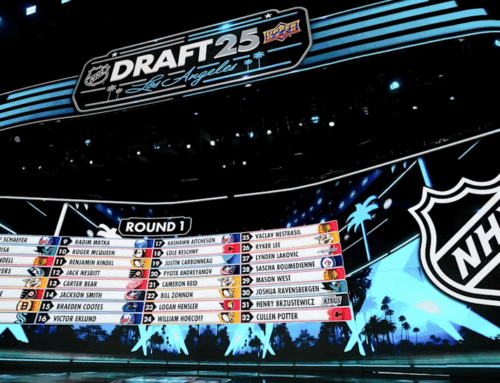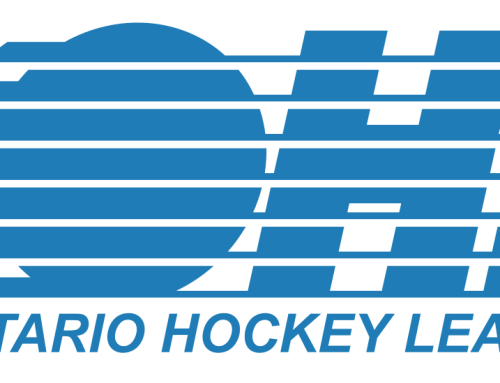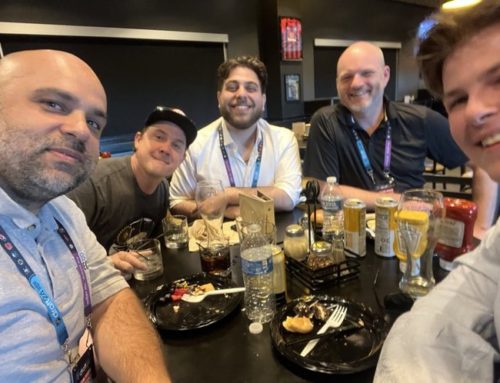Prospect Ramblings: Which League Is Best for Developing Prospects?
Hadi Kalakeche
2021-10-19
Welcome to my first-ever ramblings, where I’ll be writing down my thoughts on the NHL’s prospects once a week. I’ll be using the ramblings to let you in on some questions I ask myself often, regarding NHL prospects, amateur scouting and player development.
Starting off:
A little over a week ago, a trusted member of the analytics community, CJ Turtoro, tweeted this regarding the AHL:
I used data from @TopDownHockey's prospect model to show that the average AHL season actually /harms/ the long term outlook for a prospect. In fact, it does so more than any other league.
The NHL, by comparison, improves outlook the most of any league. https://t.co/yxM3R9TW6k
— CJ Turtoro (@CJTDevil) October 8, 2021
It was accompanied by this article, which outlined the difference between the increase in NHLer and Star probabilities in prospects that join the NHL, versus the decrease in those same projections when prospects join the AHL (visualized below).

The article continues to state that the AHL is, in fact, last out of all 95 tracked leagues in terms of the average effect on a prospect’s NHL projections, and Turtoro argues that the developmental value of having a prospect play in the NHL has far more potential for growth, as they learn to play at the level they’re aiming for.
This question has been at the back of my mind ever since the Canadiens’ Jesperi Kotkaniemi was sent down to Laval after a shaky start to his sophomore season in 2020; does sending down prospects who are struggling do anything for their game in the positive sense, or are they better off playing through the rough patch while using their NHL team’s large array of resources to sort their shortcomings out?
Also, if prospects don’t develop in the AHL, and if they’re not good enough for the big team, where do you develop them? Is there one league that’s better than all the others, or does it function on a case-by-case basis depending on the prospect?
Now, I have no data to back it up, but here’s the only hypothesis I’ve come up with so far: leagues with international ice surfaces and adult players, such as the SHL and the Finnish Liiga, might be better for 20+ year-old prospects who already have the instinct of cutting towards the middle of the ice and playing between checks, while needing to get better with the puck on their stick; playing on larger ice forces them to up the tempo while maintaining control of the puck and to get involved in transitions, to the detriment of allowing prospects to take wide routes that wouldn’t work in the NHL. If their instincts already keep them away from those habits, then international ice seems like a great match for their needs.
It is also a great league in which to learn how to play as a five-man unit in each team’s zone; the larger offensive thirds lead to longer stretches of play in each zone, forcing players to scan regularly and remain on their toes. Swedish and Finnish players are often skilled at blocking passing lanes and reading plays as a result.
Here is Antti Saarela’s (#25 in green) second goal of the game. Saarela does a nice job of losing the opposing defender, Eemeli Suomi makes an excellent pass, and then Saarela finishes it off. #Blackhawks #HockeyTwitter #HawksProspects #Ilves #Liiga pic.twitter.com/2mNUvxagYk
— Chicago Prospects (@Chi_Prospects) October 16, 2021
On the other hand, college hockey could be a great opportunity for a younger prospect to learn to escape pressure and move off-the-puck, as the 18-24 year-old range of hockey players tends to be more intense on the forecheck and on loose pucks than junior leagues, while having decent enough knowledge on how to clog up passing lanes appropriately and defend in-zone to force the prospect to add a layer of thinking to his routes through traffic.
The AHL can still be a league in which a prospect learns some aspects of the NHL game, but they will likely need to have a pro frame and high-level escapability to be able to keep up with the more traditionally physical hockey that awaits them in the minors.
If you ask any player who has played in both leagues, they will often highlight how massive the step is between the two and how much faster the NHL is; if prospects who don’t tend to play with pace find themselves in the AHL, they likely won’t develop the habit later on, so long as they play in a structure that rewards dump-and-chase, hard-nosed hockey. They also won’t have access to the same resources as they would at higher levels, and could have their mind on a call-up the whole time rather than focusing on their development team for the year, which can lead to potential friction in the locker room with teammates who are more dedicated to the minor-league team than they are.
In short, in my mind, the best league for developing a prospect depends on what the prospect needs to learn. There are individual programs that might be better than others at teaching and integrating foundational hockey tools in young players – the OHL’s London Knights, Shattuck St. Mary’s prep school, the SHL’s Frölunda for defensemen, and others come to mind – but the level of competition changes drastically from league to league, and what matters the most is regularly experiencing game situations that the prospect will see often at the NHL level, which they currently are not comfortable with.
Game situations like transitions, pressured puck carries, playing on the backhand, board battles, rush defense, and many others can sometimes be avoided entirely by prospects, who then build and accumulate bad habits. If you find the league that forces them into the specific NHL-adjacent situations they need to learn to handle, they’ll be exposed to a side of their game that they can then explore and develop, effectively adding to their arsenal of on-ice abilities before they get anywhere near their team’s starting lineup.
————————————————————————————————————————————————————————————————————————————–
– Hadi K.
Follow me on Twitter @HadiK_Scouting for all of your NHL prospect needs!






